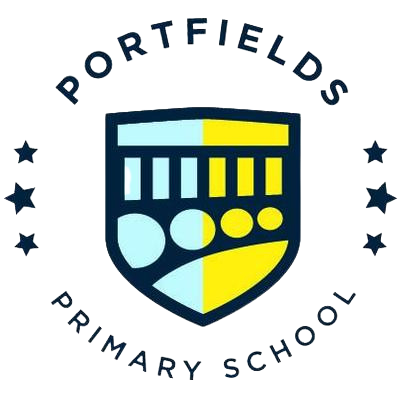Art
At Portfields Primary School, we believe that every child is an artist. The intent of our Art curriculum is to foster creativity, self-expression, and a lifelong appreciation for the arts in all pupils. We aim to provide a high-quality art education that inspires and engages every child, equipping them with the skills and knowledge necessary for artistic and personal development.
In line with National Curriculum expectations, our pupils use sketchbooks to record ideas and experiment with different art techniques, including drawing, painting and modelling with a range of materials. They are taught to think critically and evaluate creative works using the language of art and understand how they can use this information to further their own learning.
A Portfields child will:
- Develop art and design skills using a variety of media and techniques, demonstrating progression across year groups.
- Learn about a diverse variety of artists from different schools of art and how they contribute to our culture.
- Learn how to analyse and think critically about art: their own and that of others including the professional artists studied.
- Believe that they can produce quality artwork that they are proud of.
- Use all of the above to experiment, invent, create and improve their own work in a range of media.
Implementation:
- Teachers discuss and model all aspects of art and design, including critical thinking and art analysis, in order to demonstrate processes and address any misconceptions.
- They give children the time and resources to develop and practise each skill, providing regular feedback throughout lessons.
- Pupils use sketchbooks to record ideas and document creative processes.
- Sketchbooks include written annotations and records of thinking (at an age appropriate level) including thoughts on examples of the studied artist/ school of art.
- Talk Cards (See below) are used to ignite curiosity and support children's use of technical vocabulary.
- Units of work usually begin with a study of an artist or school of art to inspire initial ideas and research.
- Pupils are encouraged to practise and apply techniques using a variety of media, leading to the development of an independent final piece.
- Pupil work is celebrated and showcased within the classroom and wider school.
Developing skills and techniques:
- Skills are revisited and developed each year in progression, building on previous knowledge.
- Sketchbooks are used to record ideas, analyse images and experiment with different compositions and techniques.
- A range of techniques in different media are taught every year including sketching, printing, painting, modelling and sculpting and also in work using mixed media.
Knowledge and thinking critically
- A progression of thinking skills is used from the earliest years through to Year 6; beginning with likes and dislikes, through why something is liked or not, to understanding what effects an artist might have been wanting to achieve and how they achieved those effects.
- Children increasingly use their understanding of media, techniques and composition to achieve different effects, to think critically about their own work and to develop their ideas.
- Children review their own work as it progresses, with increasing depth and knowledge as they get older, and become able to change things that they feel are not working in practice.
- Children assess their own work and that of others in order to consolidate their learning.
Positive attitudes to art
- Teachers model and foster a positive attitude towards art.
- Teachers give advice for improvement in a constructive, positive way.
- All children know that artists often make lots of trials before they feel they have got it right. Experiments that do not work are part of the process.
- Pupils know that producing images of a photographic likeness is not a marker of good art: many artists are aiming for things much different to that, such as mood and effect.
- Work produced is celebrated by being shown to the class and the final pieces are displayed in the class as far as possible.
